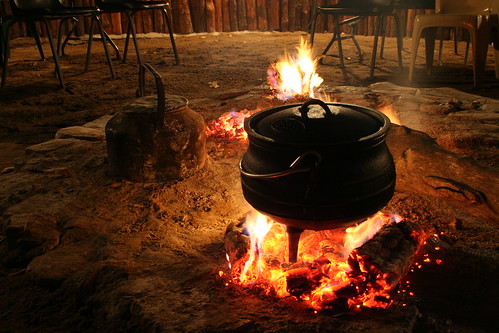It has become evident, now more than ever, that one of the biggest deterrent to a child learning, is the very real problem of bullying. Children cannot learn when their focus is on survival and not an upcoming spelling test. In fact, any schoolwork pales in comparison to the threat a child feels every day when he walks into the cafeteria for lunch.
The Scope of the Problem
Recent statistics reveal that nearly 3 million students every year are bullied by roughly 2 million students playing the role as bully. In fact 1 in 7 students, from the time they enter school to when they graduate some 12 years later is either a bully or has been victimized by one. Strong evidence suggest that the most common motivation behind school shootings are revenge from being bullied. A staggering 87% of school shooting and other forms of violence is believed to be because of some form of bullying! In fact murderers are twice as likely as their victims to have been bullied, and finally, an estimated 280 thousand students all across the US are bullied each and every month. You cannot draw a more direct line from bullying to the problems children’s face in the school educational system.
The New Problem of Bullying
Back when many of us were children, the problem of bullying thankfully stopped once we were safely home from school. People do not write bullying letters or throw bricks with notes attached through their victim’s bedroom windows. Unfortunately our children today are vulnerable to bullies in a much different way. Bullies now have access to our children through the internet; a practice known as cyber bullying . Children today have access to each other through various social media platforms like Facebook, Myspace, Twitter, Pinterest, Google Plus, and Skype. Children also use basic webcams as well. While the prevalence of cell phones has also made our children more vulnerable to bullies, it seems that bullying pretty much skipped over that form of bullying in preference to online forms of bullying often called cyber stalking. Thanks to the advances of technology in our world today bullies have access to their victims 24 hours a day, 7 days a week. They can now attack their victims whenever and wherever and school administrators, teachers, parents, and police have been at a loss when it comes to preventing this enormous scourge on our society. If children cannot successfully regroup back home and get away from their tormentors, what can they do? Only 1 in 4 teachers see bullying as a real problem and therefore only report bullying a paltry 4% of the time even though a staggering 90% of children grades 4th through 8th grade report being bullied! Children and guns do not mix, especially when you throw bullying into the mix. Some studies even report as high as 75% of all school violence is due to bullying.
Forms of Bullying
Not everyone recognizes bullying when it is happening, and part of that is due to the fact that even though it is still very serious, not all bullying is so obvious and sticking another child’s head in the trash can in the hall. There are 4 types of bullying.
Verbal: This can be making threats, calling names, or anything designed to make another person feel intimidated and afraid.
Physical: This can be as mild as a shove in the hall or a swirly to violence with weapons or just fists. It’s the most obvious but not always the most serious form of abuse a child can be made to endure.
Social: This can be as seemingly benign as leaving someone out of games or other group activities or deliberately ignored. It can also be in the form of spreading nasty rumors about the victim. This is a very common form of bullying and can be severely damaging to the victims.
Cyber: This is using technology like chat rooms, instant messaging, instagrams, emails, and pictures to humiliate, coerce, and embarrass fellow students.
Prevention Starts in the Home
If you expect to be able to bully proof your child, you’re going to have to start before he/she begins school. The more you can do at home to create a strong independent child the better. The more you can do to build up his self-esteem the harder it will be for some bully to tear him down again. Keeping the lines of communication open between yourself and your child is important. The better a child feels about himself the less likely he will allow a bully to make him feel bad about himself. Enrolling you child in self-defense classes is a great idea. Do your research so you can find a school that shares some of your beliefs and views on handling school bullies. Any karate school you send your child too should not just teach the physical moves; that is but a part of the whole picture. Your child should be taught, and modeled respect for others and themselves. If they respect their minds and bodies the less likely they will allow others to disrespect themselves. While you cannot stop all bullying, you can lessen the damage it can do to your child.
If your child complains to you about bullying it’s important that you believe him. You can doubt all you want in your mind, but your child should only see you the protector that believes in him. Find out what is happening to your child and what he/she expects you to do about it. You may find that your child wants to handle things on his own and just wants your support. You might also find that you need to step in and exert your parental control and make sure the bullying STOPS immediately. Above all, listen to your child.
The Pain Ends Here
If you discover your child is one of the millions of victims of bullying it’s important that you send a strong message to your child. You must believe and act immediately. You can say you love and support your children all you want but you have to show it. The moment you find out, you need to make a plan of action. Many children do not want their parent’s overt involvement in their help. They do not want a knight in shining armor to swoop in and rescue them. Most kid’s school reputation could not take that much of a hit. Ask your child if he has an idea of what he would like you to do, then read between the lines. You know your child best and what he says may not exactly be what he wants. Trust your gut instinct and act on it.
Lindsay Holland is a professional blogger that provides parents and guardians with information and reviews for after school care programs and day cares. She writes for The Learning Experience, a leading after school program in Merrimack and child care center in Merrimack NH.






















































.jpg)













 Owning a breathalyzer of your own probably wouldn't be on the top of your priority list. A lot of us are very trusting of ourselves. We have high beliefs that "I'll be fine" and "I've done this type of thing many times before." I have a breathalyzer of my own and I have found a handful of reasons of why I'll keep it around. Here they are:
Owning a breathalyzer of your own probably wouldn't be on the top of your priority list. A lot of us are very trusting of ourselves. We have high beliefs that "I'll be fine" and "I've done this type of thing many times before." I have a breathalyzer of my own and I have found a handful of reasons of why I'll keep it around. Here they are:


















